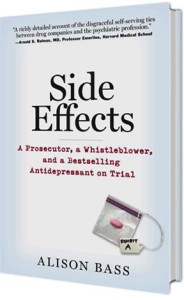Between teaching journalism and working on my master’s thesis, I have only now found the time to scrutinize the much-heralded Zoloft study published last Friday in the online version of The New England Journal of Medicine. And I have a few bones to pick with it, some of which have already been picked by commentators on Pharmalot.
The study found that a combined regimen of Zoloft and cognitive behavior therapy was more effective than either the drug or therapy alone in treating anxiety in children (age 7 to 17). It also concluded that Zoloft and CBT by themselves were more effective than placebo. News accounts of the study trumpeted the fact that none of the children in this trial committed suicide and that there was no significant increase in suicidal thoughts among those taking Zoloft. By highlighting these findings, the study’s researchers no doubt intended to add weight to the argument that the FDA acted too hastily back in 2004 in putting black box warnings on Zoloft and other antidepressants.
Not so fast please. If you look closely at the data in this study, there are indications that a number of children taking Zoloft did have adverse reactions to the drug and experienced “a worsening” of psychiatric behaviors, in one case so severe that the child required hospitalization. Indeed of the three children in thte study who had serious adverse effects, two of them were in the Zoloft only arm of the study and one in the combination arm. Yet the study researchers dismiss the case requiring psychiatric hospitalization as being “unrelated to the study treatment.”
This language of blithe dismissal is eerily reminscient of another antidepressant trial: Paxil study 329, which is currently under investigation by the U.S. Department of Justice back story. In study 329, researchers not only dismissed some adverse effects as being unrelated to Paxil, but they also concluded that Paxil was more effective than placebo, when in fact the data showed it was not. (As I reveal in my book, Side Effects, Brown University researchers also misrepresented data in the trial, coding teenagers who were suicidal as being “noncompliant.”
Indeed, as Doug Bremner, professor of psychiatry at Emory University, points out on Pharmalot, the results of this study are not that different from the non-statistically significant results in the Paxil study. In that study, Paxil was found to be no more effective than placebo on the two primary outcome measures. In the more recent Zoloft study, Bremner notes that when you look at the actual data on one of the primary outcomes, the Pediatric Anxiety scale, the difference in improvement between the patients in the Zoloft only arm and the patients in the placebo group are also not statistically significant. Bremner dissects problems with the Zoloft study in greater depth on his blog.
There’s more. The Zoloft study also minimizes the fact that of the 14 patients who withdrew from either treatment or the study due to adverse side effects, most of them were in the Zoloft only group. While its authors make much of the finding that there were no patients with suicidal thoughts in the Zoloft only group, they gloss over the fact that there were five patients who expressed suicidal ideation in the combined Zoloft/CBT group.
The researchers also ignore the finding that overall, there were many fewer side effects among the children in the cognitive behavior therapy group alone; patients in the latter group reported fewer cases of insomnia, fatigue, sedation, restlessness and fidgeting than those in the Zoloft study. That makes a lot of sense given the research showing that there is an increased risk of akathasia (agitation and restlessness) among patients who take SSRI antidepressants like Zoloft, Prozac and Paxil.
Finally, the Zoloft trial shares another disturbing similarity with Paxil study 329: in the fine print at the end of the NEJM report, its researchers disclose a myriad of financial ties to the pharmaceutical industry, including extensive consulting and speaking fees from companies that make SSRI antidepressants. So as several of the Pharmalot commentators ask, why should we trust the conclusions of this study? Why indeed.



7 Comments